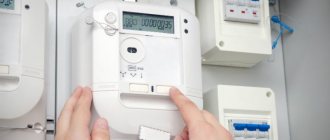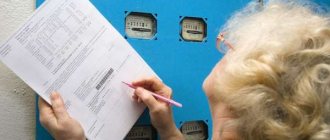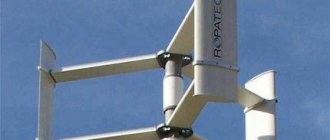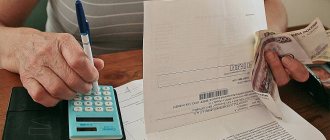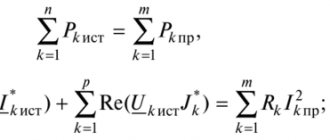When faced with the need to pay bills for the first time, many people are initially confused.
Difficulties can be caused by: installing a new meter, switching to a two-tariff meter, or even setting up an autonomous power supply system, for which you need to independently calculate the approximate power consumption without a meter.
Let's find out how to calculate the payment for electricity using the meter in all of the above cases. Everything is much simpler than it seems!
How to take meter readings correctly?
Counters come in two designs:
- Induction devices are “old-fashioned” bulky devices with a rotating wheel.
- Static - or modern electric.
Many people still have induction ones, but the trend towards switching to electronic models is already clearly visible - they calculate more accurately, look better, and do not make noise.
When taking readings from an induction device, pay attention to the first 5 digits (some models have 4).
The last digit is usually placed slightly separately or highlighted in a different color, it rotates relatively quickly - it is usually not written on the receipt (for an even and simpler counting) - this is the reading after the “decimal point” in the decimal fraction.
It is better to take data on the same day of the month. In some regions of the country, it is customary to call the MES or RES on your own (on the appointed day) and report your readings. Otherwise, the organization makes calculations based on average consumption over the past months - this data will be reflected in the receipt.
How to take readings from an electronic meter, multi-tariff readings
The electronic device can calculate a single tariff, or can be configured to count for several tariffs (different tariffs are introduced for the purpose of saving - during the day they are a little more expensive than usual, and at night they are much cheaper).
The desired mode is selected in the device menu (modes are usually changed by repeatedly pressing the enter button):
- T1 – for single tariff.
- T2 – for separate payment of the grace period from 23:00 to 7:00 am.
- T3 – one standard tariff and two preferential ones.
When these modes (T1 and T2) are displayed alternately, the device will show different readings that have accumulated over the month at a given tariff.
The difference with previous readings is calculated for each tariff separately.
How to take readings from an electric meter when replacing it
Meters are replaced due to their obsolescence, when inaccurate readings are suspected, and for periodic testing in the laboratory. What to do with the readings if the old meter was dismantled and a new one was installed?
Before the old meter is removed, the readings from it are copied onto paper.
You will need to pay off the outstanding balance on the meter.
All other manipulations will be done by the controller.
He will seal the new meter, draw up documents for it and transfer them to the service organization.
Next time the receipt will come with a new number and readings of the installed meter.
By the way, many people are interested in whether it is possible to replace the electric meter yourself? Yes, it is possible, but you must first notify the RES (you can do it by phone). But the company controller must seal the meter.
Wheel counters
These counters are well known to the oldest generation of pensioners. The oldest of these meters - mass-produced single-phase devices for the public - did not have decimal places because they were not accurate enough. People are used to reading entire readings without thinking. Such meters worked for decades and everything was fine.
But then the accounting organizations began to change the meters to new, more accurate ones, and this continues to this day. People habitually read readings without taking into account the decimal point and report them to energy sales. There are narrow-minded clerks there and, moreover, unscrupulous ones.
Calculation of power consumption
Sometimes an owner needs to know the approximate energy consumption in his home without a meter in order, for example, to switch the house to an alternative energy source.
To do this, all household appliances and light bulbs in the house are rewritten.
The power of each of them is indicated (if it is not visible on the case, it is taken from the technical documents).
Those devices that do not give off heat while they are working are called condenser devices. For them, you need to take into account that the starting power will be 2 - 2.5 times greater than that indicated in the documents.
Add up all the powers of induction appliances (giving off heat - irons, incandescent lamps, stoves, etc.) and condenser appliances (TV, washing machine, refrigerator, etc.), multiplied by 2 - 2.5.
Add 10% to stock. The required power is obtained.
Types of tariff systems
Until 1996, Russia had only a single-tariff system, according to which the cost of a kilowatt of resource was calculated at one rate, regardless of the time of day.
But the regime of most people is such that the main individual consumption of electricity occurs in the morning and evening hours. In the morning we get ready for work, and in the evening we use lighting, turn on the TV and other household appliances. Day and night consumption is significantly lower. Such an inconsistent rhythm negatively affects the overall operation of the power plant.
In order to avoid sharp jumps in consumption, energy supply companies have introduced multi-tariff payment systems. The point is that the tariff is differentiated by zone of the day, i.e. there is a different rate for different times of using electricity. For a two-tariff system - a day zone (from 7 to 23 hours) and a night zone (from 23 to 7 hours). For a three-tariff system - a peak zone (from 7 to 10 and from 17 to 21 hours), a semi-peak zone (from 10 to 17 and from 21 to 23 hours) and a night zone (from 23 to 7 hours).
The purpose of the system is to encourage the use of energy-intensive household appliances (dishwasher, washing machine, oven, etc.) at night. In addition to leveling the load of the power plant, such a system helps save on utility bills. In order to use a multi-tariff system, it is necessary to install a special meter that provides the ability to account for energy consumption depending on the time of day.
IMPORTANT! In order to pay for light by meter using a multi-tariff system, it turns out to be profitable, you will have to rearrange your daily routine: transfer some of your household chores to the night, which is inconvenient, for example, for a person who works during the day.
How to calculate the cost of electricity and its consumption?
Let's look at how to calculate electricity consumption. On meters, the basic unit of measurement is 1 kW/h (kilowatt per hour). Each region has its own prices for this kilowatt.
To calculate the payment , you need to know two indicators: the tariff (how much 1 kW/h costs) and energy consumption (how much “runs up” on your meter).
There are three ways to find out local rates:
- From the receipt that comes to your apartment or house every month.
- By calling the supplier organization.
- On the official website of the relevant electrical networks.
Electricity consumption is calculated by simply subtracting the previous month's figure from the current figure.
By multiplying the expense by the tariff, we get the amount that needs to be paid for light.
Did you know that a custom heating meter can save you up to 60% on your space heating bills? Heating meter for an apartment - operating principle, installation, reading.
We'll tell you how to heat a country house with electricity here.
Installing electrical wiring requires certain knowledge. The next topic will be devoted to the intricacies of installing electricity in a private home.
Common house meter (ODN)
Another question - how to calculate one-time electricity consumption? The general meter keeps track of electricity for lighting the elevator, entrance and stairs and other joint expenses.
The payment from each owner will be greater, the more m2 of living space he occupies.
In order:
- Readings are taken in the same way as on a home device.
- The last paid data for the last month is subtracted.
- The resulting readings are divided by the area of all apartments.
- What happens is multiplied by the number of m2 of your apartment.
- Your expense is multiplied by the local rate.
How is payment calculated if there is no meter?
How to calculate electricity without a meter? There may not be an individual metering device. In this case, the average consumption rate for the region is taken.
The number of people living in the apartment is multiplied by the average consumption rate (each region has its own) and multiplied by the local tariff.
General house needs
Receipt for electricity
The total amount in the receipt may vary. It may be increased by additional expenses. This is due to the fact that a fee is charged for general household needs. These include fees for lighting in the entrance, on the site, lamps in the attic, in the elevator, and built-in parking. All energy that is spent on illumination and maintenance of the house is divided among the residents and added to the receipt in the ODN column. The rate for general house energy was established by Law No. 307 of 2006 and was the same for everyone. Further, after the release of resolution No. 344 in 2013, the fee is calculated depending on the area of the apartment.
Payment is calculated as the square footage of a certain apartment divided by the area of the house. The resulting coefficient determines the amount that the apartment owner must pay.
Calculation example
For example, let’s take a conventional apartment equipped with an individual meter. The owner just took a reading: 56100 kW.
Last month it recorded 55830 kW.
To find out the amount of energy expended, he subtracts the smaller from the larger:
56100 – 55830 = 270 kW.
In his area the tariff is 3.5 rubles.
270 x 3.5 = 945 rub.
That's how much he has to pay for the month.
In conclusion, we would like to add that there are many ways to pay for electricity. You can fill out the received receipt, go to the nearest bank, or even do it without leaving your home, on the website of the relevant organization. Also, many banks provide services for paying for electricity via the Internet.
Many apartment owners do not agree to pay for heating according to average rates. A heat meter for an apartment will allow you to pay for the heat actually spent.
Instructions for making an electrolyzer with your own hands are presented in this topic.
Where to submit readings
It is necessary to take data from the electricity meter within a specified period, which precedes or includes the period allotted for sending information; the exact interval is specified in the contract.
Testimony from the public is received by the utility service provider. This role may be played by a supplying organization, a management company or a homeowners' association. It is taken into account that these powers can be delegated to special settlement organizations or auxiliary institutions.
You can transmit electricity meter readings using different methods:
- Enter the information on the receipt and bring it to the billing department.
- Send via Internet. To do this, you need to fill out the appropriate table on the organization’s website or in your personal account.
- Indicate on the form that you want to put it in a special box installed in various institutions.
There are also other modern methods that involve the use of technical devices.
Saving Tips
There are two ways to reduce your electricity bill, both of which involve reducing consumption:
- You can independently regulate consumption by turning off the most “gluttonous” devices. To calculate how much they consume, you can check their data sheets or turn off all devices and turn on only the ones you need. The value will be immediately reflected on the electricity meter.
- You can also switch to “night” mode, shifting the main load on the network to the dark. This will reduce costs, but may not be very beneficial for people who sleep at night, but it will help in some situations. For example, if you postpone making jam or drying mushrooms in the oven overnight, you can reduce your bills a little.
Another option would be to use appliances with minimal consumption, especially large appliances and lamps.
To pay for electricity, you only need to know a few data: the amount of electricity consumed and the tariff. You can find out both on your own if you have a meter and the Internet.
Sources
- https://potrebiteli.guru/zhkh/kak-schitat-platu-za-elektroenergiyu-po-schyotchiku.html
- https://ozhkh.ru/kommunalnye-uslugi/raschet-stoimosti-elektroenergii
- https://kak-sdelano.ru/elektrica/kak-pravilno-snimat-i-schitat-pokazaniya-schetchika-elektroenergii
- https://4schetchika.ru/elektroenergiya/kak-pravilno-snimat-i-schitat-pokazaniya/
- https://oschetchike.ru/elektroenergii/kak-poschitat-elektroenergiyu-po-schetchikku
- https://mosenergosbyt24.ru/oplata/raschet-stoimosti-elektroenergii
- https://teplo.guru/elektrichestvo/kak-poschitat-po-schetchiku.html
Induction meters
This process for old-style devices is quite simple; it is enough to rewrite the information from the mechanical indicator, where the numbers display the total amount of electricity consumption over the entire period of operation of the device. After this, the readings for the previous period are subtracted from the resulting number. The result is multiplied by the current tariff.
The information is included in the payment receipt. Once every six months, energy companies have the right to monitor the metering device, which obliges the consumer to provide access to it.
Induction meter readings with drum
In the figure above, the segments of the mechanical indicator that display an integer are marked in red, and tenths of kilowatt-hours are marked in blue. There are models without displaying the fractional part. The meter's rated current, voltage, and frequency parameters are shown below. By the rotation speed of the drum, you can visually assess the current load power.
Important! Tenths are not included in the receipt.
Induction devices are gradually being replaced by electronic ones due to their undoubted advantages. Let's tell you what they are.
Federal Tariff Service
In 2004, a federal executive body was created - the Federal Tariff Service (FTS of Russia).
The task of this service is to regulate prices for services and goods, as well as control their use.
On the official website of the Federal Tariff Service of Russia, you can correctly calculate online, based on meter readings, fees for electricity and other utilities, as well as view tariffs for all types of household services for each region.
Please note: it should be borne in mind that this resource is for informational purposes only, and the calculation result cannot be used as a payment document.
If the meter is two-tariff
Metering devices come with two tariffs. They are installed in those regions where different tariffs are provided for electricity consumption during the day and at night. The subscriber pays much less for use at night than during the day.
Thanks to this, the budget is maintained, and local power plants operate in normal rather than emergency mode during peak hours. The following calculations are possible using a two-tariff meter:
- for the daily volume of electricity – T1;
- for the night volume of electricity – T2;
- the total amount for the past period to be paid – Total.
Such a device can be configured in such a way as to calculate the total amount of electricity on the meter. Then the readings are indicated in the “Total” item. In order to take readings from the electric meter at a separate tariff, use the “Enter” button. If you click on it once, the information on the consumed volume of electricity consumed is displayed at the T1 tariff, and if you click twice, at the T2 tariff. When calculating the cost, the amounts that are paid for daytime and nighttime consumption are considered. The data is then added up and payment is made for the total amount of electricity consumed.
In the receipt for utility services, information is indicated in special paragraphs, and calculations are made based on prices that are established in the region of residence. The sample on the receipt helps you fill out the receipt.
Payment is made:
- at the cash desks of the management company;
- through terminals that have the appropriate capability;
- at the post office;
- in banks;
- online through various services.
Basics and rules for calculating payments for electricity
The number of household electrical appliances and gadgets is constantly increasing. Therefore, more and more costs are spent on electricity. The electric meter takes into account kilowatt-hours. This is understood as an off-system unit of measurement showing electricity consumption per hour.
The main electrical and technical parameters are indicated on household appliances. Basically, they represent maximum power at peak values. Since many household appliances operate for a short period of time, the power declared by the manufacturer can be reduced by 25%. In an apartment with a small number of rooms, you can roughly calculate which electrical appliances are working and how much power they consume:
- 500 W refrigerator;
- 200 W TV;
- 400 W laptop;
- 2,000 W washing machine;
- 900 W microwave.
Knowing the approximate operating time of the devices, you can calculate kilowatt-hours. To do this, a formula is used to calculate electricity, in which the power in kilowatts is multiplied by the duration of operation. You will get the following values:
- when operating 8 hours a day, the refrigerator consumes 4 kW/h (8 * 0.5);
- with a two-hour TV operation, consumption will be 0.4 kW/h or 2 * 0.2;
- laptop - 2.4 kW/h (with 6 hours of work per day) or 6 * 0.4;
- washing machines 4 kW/h (2 hours per week);
- microwaves (10 minutes or 0.16 hours) = 0.16 * 0.9 = 0.144 kW/h.
If each value is multiplied by 28 (days), and the washing machine by 4 (weeks), then the result of calculating electricity costs will be 210.43 kW/h. This is the monthly expense value. To this number it remains to add a small amount for the work of various gadgets. If it does not indicate the maximum power, then you can still make approximate calculations.
The voltage of electrical networks in the CIS is 220 V. But chargers use only 5V. The current strength varies. If tablets and phones consume 1 A when charging, then, for example, steam generators consume 2 A. A full charge lasts, on average, 4 hours. It turns out:
- 5 * 1 * 4 = 20 W/h (for telephone);
- 5 * 2 * 4 = 40 W/h (for a steam generator).
As a result, it takes approximately 1 kW/h to charge mobile devices every month.
In addition to manual calculations, you can use electricity consumption calculators, which are available on thematic websites on the Internet. To do this, you need to indicate electrical appliances and their operating hours per day, week or month, as well as the cost of kWh in the region.

